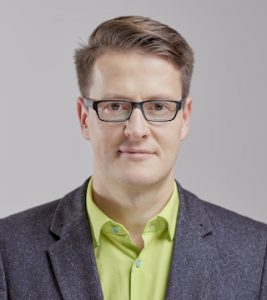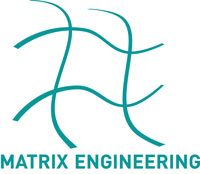
A10 – Glycosaminoglycan-poly (ethylene glycol) -hydrogel to improve dermal wound healing
The proposed project aims at the characterization and application of biohybrid hydrogels based on glycosaminoglycans (GAG, chondroitin sulfate, dermatan sulfate, heparin) or GAG derivatives (hyaluronan sulfates, selectively desulfated heparin) and star-shaped end-functionalized poly (ethylene glycol) , Which are to be prepared by various in situ crosslinking reactions and incorporating functional (eg MMP-cleavable) peptides with graded physicochemical properties. The GAG ??component of the materials is determined by the covalent attachment of adhesion ligand peptides and by loading with GAG-binding cytokines (eg FGF-2, VEGF, PDGF, TGF-IL-4, IL-10, IL -13, etc.), wherein the sulfation patterns of the glycosaminoglycan and the degradation rate of the gels are adapted to control the rate of release. This material platform is to be used in the development of previous work on angiogenesis-stimulating starPEG-heparin-hydrogels in order to stimulate the recruitment of endothelial cells by specifically orchestrated exogenous signals Precursor cells and the morphogenesis of endothelial cells into capillary networks and to influence the activation and differentiation of macrophages and fibroblasts. The project is therefore closely co-operating with B3, B4 (macrophage activation, angiogenesis, migration and differentiation of dermal fibroblasts), B2 and B5 (growth factors and cytokines of bone regeneration) and A4 (SDF-1 derivatives for local enrichment of endothelial precursor cells ). Further collaborations within the Transregio are planned with A6 (diffusion of growth factors in GAG-based hydrogels), Z4 (analysis of cell secreted ECM in heparin-based hydrogels) and B10 (tracking methods for the analysis of cellular infiltration of GAG-based hydrogels) Hydrogels). With all subprojects of the A-Division, further detailed adjustments to preparative concepts and analytical questions are planned in the characterization of GAG-based polymer matrices.
Publicationen
- Kühn S, Freyse J, Atallah P, Rademann J, Freudenberg U, Werner C. Tuning the network charge of biohybrid hydrogel matrices to modulate the release of SDF-1. Biological Chemistry, vol. 402, no. 11, 2021, pp. 1453-1464. https://doi.org/10.1515/hsz-2021-0175.
- Hassan G, Forsman N, Wan X, Keurulainen L, Bimbo L, Stehl S, van Charante F, Chrubasik M, Prakash A, Johansson L-S, Mullen D, Johnston B, Zimmermann R, Werner C, Yli-Kauhaluoma J, Coenye T, Saris P, Österberg M, Moreira V. Non-leaching, highly biocompatible nanocellulose surfaces that efficiently resist fouling by bacteria in an artificial dermis model. ACS Applied Bio Materials 2020, June 22. DOI: 10.1021/acsabm.0c00203
- Atallah P, Schirmer L, Tsurkan M, Putra Limasale YD, Zimmermann R, Werner C, Freudenberg U. In situ-forming, cell-instructive hydrogels based on glycosaminoglycans with varied sulfation patterns. Biomaterials. 2018; 181:227-239.
- Aliperta R, Welzel PB, Bergmann R, Freudenberg U, Berndt N, Feldmann A, Arndt C, Koristka S, Stanzione M, Cartellieri M, Ehninger A, Ehninger G, Werner C, Pietzsch J, Steinbach J, Bornhäuser M, Bachmann MP. Cryogel-supported stem cell factory for customized sustained release of bispecific antibodies for cancer immunotherapy. Sci Rep. 2017;7:42855.
- Gvaramia D, Müller E, Müller K, Atallah P, Tsurkan M, Freudenberg U, Bornhäuser M, Werner C. Combined influence of biophysical and biochemical cues on maintenance and proliferation of hematopoietic stem cells. Biomaterials. 2017,138:108-117.
- Lohmann N, Schirmer L, Atallah P, Wandel E, Ferrer RA, Werner C, Simon JC, Franz S*, Freudenberg U*. Glycosaminoglycan-based hydrogels capture inflammatory chemokines and rescue wound healing deficiency. Sci Transl Med. 2017;9(386). *equal contribution
- Weber HM, Tsurkan MV, Magno V, Freudenberg U, Werner C. Heparin-based hydrogels induce human renal tubulogenesis in vitro. Acta Biomater. 2017, 57:59-69.
- Schirmer L, Atallah P, Werner C, Freudenberg U. StarPEG-heparin hydrogels to protect and sustainably deliver IL-4. Adv Health Mater. 2016;24:3157-3164.
- Ansorge M, Rastig N, Steinborn R, König T, Baumann L, Möller S, Schnabelrauch M, Cross M, Werner C, Beck-Sickinger AG, Pompe T. Short-range cytokine gradients to mimic paracrine cell interactions in vitro. J Control Release. 2016;224:59-68.
- Watarai A, Schirmer L, Thönes S, Freudenberg U, Werner C, Simon JC, Anderegg U. TGFß functionalized starPEG-heparin hydrogels modulate human dermal fibroblast growth and differentiation. Acta Biomater. 2015;25:65-75.
- Freudenberg U, Zieris A, Chwalek K, Tsurkan MV, Maitz MF, Atallah P, Levental KR, Eming SA, Werner C. Heparin desulfation modulates VEGF release and angiogenesis in diabetic wounds. J Control Release. 2015;220:79-88.
- Zieris A, Dockhorn R, Röhrich A, Zimmermann R, Müller M, Welzel PB, Tsurkan MV, Sommer JU, Freudenberg U, Werner C. Biohybrid networks of selectively desulfated glycosaminoglycans for tunable growth factor delivery. Biomacromolecules. 2014; 15:4439-46.
- Tsurkan MV, Chwalek K, Schoder M, Freudenberg U, Werner C. Chemoselective peptide functionalization of starPEG-GAG hydrogels. Bioconjug Chem. 2014;25:1942-50.
- Chwalek K, Tsurkan MV, Freudenberg U, Werner C. Glycosaminoglycan-based hydrogels to modulate heterocellular communication in in vitro angiogenesis models. Sci Rep. 2014;4:4414.
- Tsurkan MV, Chwalek K, Prokoph S, Zieris A, Levental KR, Freudenberg U, Werner C. De-fined polymer-peptide conjugates to form cell-instructive starPEG-heparin matrices in situ. Adv Mater. 2013;25:2606-10.
- Baumann L, Prokoph S, Gabriel C, Freudenberg U, Werner C, Beck-Sickinger AG. A novel, biased-like SDF-1 derivative acts synergistically with starPEG-based heparin hydrogels and improves eEPC migration in vitro.J Control Release. 2012; 162: 68-75.
- Prokoph S, Chavakis E, Levental KR, Zieris A, Freudenberg U, Dimmeler S, Werner C. Sustained delivery of SDF-1? from heparin-based hydrogels to attract circulating proangiogenic cells. Biomaterials. 2012; 33: 4792-800.
- Freudenberg U, Sommer J-U, Levental KR, Welzel PB, Zieris A, Chwalek K, Schneider K, Prokoph S, Prewitz M, Dockhorn R, Werner C. Using mean field theory to guide biofunctional materials design. Adv Funct Mater. 2012; 22: 1391-8.
- Chwalek K, Levental KR, Tsurkan MV, Zieris A, Freudenberg U, Werner C. Two-tier hydrogel degradation to boost endothelial cell morphogenesis. Biomaterials. 2011; 32: 9649-57.
- Zieris A, Chwalek K, Prokoph S, Levental KR, Welzel PB, Freudenberg U, Werner C. Dual independent delivery of pro-angiogenic growth factors from starPEG-heparin hydrogels. J Control Release. 2011; 156: 28-36.
- Zieris A, Prokoph S, Levental KR, Welzel PB, Grimmer M, Freudenberg U, Werner C. FGF-2 and VEGF functionalization of starPEG-heparin hydrogels to modulate biomolecular and physical cues of angiogenesis. Biomaterials. 2010; 31: 7985-94.
- Tsurkan M, Chwalek K, Levental K, Freudenberg U, Werner C. Modular starPEG-heparin gels with bifunctional peptide linkers. Macromol Rapid Commun. 2010; 31: 1529-33.
- Pompe T, Salchert K, Alberti K, Zandstra P, Werner C. Immobilization of growth factors on solid supports for the modulation of stem cell fate. Nature Prot. 2010; 5: 1042-50.
- Tsurkan M, Levental K, Freudenberg U, Werner C. Enzymatically degradable heparinpolyethylene glycol gels with controlled mechanical properties. Chem Commun (Camb). 2010; 46: 1141-3.
- Seib P, Müller K, Franke M, Grimmer M, Bornhäuser M, Werner C. Engineered extracellular matrices modulate the expression profile and feeder properties of bone marrow-derived human multipotent mesenchymal stromal cells. Tissue Eng A. 2009; 15: 3161-317.
- Lanfer B, Freudenberg U, Zimmermann R, Stamov D, Körber V, Werner C. Aligned fibrillar collagen matrices obtained by shear flow deposition. Biomaterials. 2008; 29: 3888-95.
- Alberti K, Davey RE, Onishi K, George S, Salchert K, Seib FP, Bornhäuser M, Pompe T, Nagy A, Werner C, Zandstra PW. Functional immobilization of signaling proteins enables control of stem cell fate. Nat Methods. 2008; 5: 645-50.
Contact

Prof. Dr. rer.nat. Carsten Werner
Professor of Biofunctional Polymer Materials
Leibniz Institute for Polymer Research Dresden e.V.
Institute Biofunctional Polymer Materials/
Max Bergmann Center for Biomaterials
Hohe Straße 6, 01069 Dresden
Phone: +49 (0)351 4658 531
E-Mail: werner@ipfdd.de
Web: ipfdd.de

Dr. rer.nat. Uwe Freudenberg
Head of the Biohybrid Hydrogels Group
Leibniz Institute for Polymer Research Dresden e.V.
Institute Biofunctional Polymer Materials/
Max Bergmann Center for Biomaterials
Hohe Straße 6, 01069 Dresden
Phone: +49 (0)351 4658 531
E-Mail: freudenberg@ipfdd.de
Web: ipfdd.de
